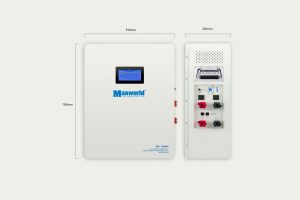How to pick a battery storage system for your home

The excess solar energy will be transmitted to the National Grid if you generate more solar energy than you use at home. Such as, you may essentially be purchasing the energy you supplied to the National Grid before the day during the evening hours and when there is no sunshine. This makes no sense. Either you’re making too much or not enough electricity.
Even if these are not inexpensive and many factors to consider before deciding. We have previously written about this. We’ll go over how to find the best battery for you in this article.

Battery capacity that can be used
The quantity of energy (in kWh) that a battery can store is measured by its capacity. This is different from the claimed “total capacity,” as a battery should never be depleted. For instance, the Powerwall is marketed as a 13.5kWh battery even though its real battery capacity is 14kWh. To avoid damage, a battery must never completely discharge.
Battery power output
The quantity of energy you can extract from the battery is known as the power output. This is very significant and distinct from capacity. The capacity of a device refers to how much it can hold, but the power output refers to how much can be drawn from it at once. Your battery might not be powerful enough to power your appliances if it has a huge capacity but a slow rate at which you can draw energy from it. If the power output is under 2.6 kW, having a battery is not all that useful.
What a battery costs
You should also think about installation expenses and any potential energy bill savings in addition to the battery’s original cost. Such as, are your costs already being reduced by the free electricity generated by your solar panels? Otherwise, your system is probably too little to make a battery worthwhile as there won’t be any extra power to hold onto.
Also, are you intending to stay in your home as long as enough for the battery to give back? This is another important question you need to ask yourself. You should not take your PV system with you when you travel, therefore they typically cost a minimum 2000euro add for the installation. Before you move, you should at the very least have saved enough money on your bills to cover the installation fees.
A home battery system will always require a long-term investment, so spend more money on a high-quality model that will last.
Will installing a battery storage system result in the loss of my Feed Tariff payments?
The duration of a battery
A battery‘s lifespan is crucial since there is no use in spending money on a battery if its performance will decline noticeably after a few months or years. Some warranties are supplied in years, while others are offered in cycles (one cycle = one full discharge and full recharge). It is typically advised that you search for one with at least 5000 cycles or 10 years.
The battery's chemistry
Although there are many various battery kinds available right now, lithium-ion and lead acid are the most popular. The best solution is typically thought to be lithium-ion batteries. This is because they outperform lead acid batteries in terms of efficiency, as well as being a third lighter, having a longer cycle life, and being safer and cleaner for the environment. Although lithium-ion batteries cost more upfront than lead-acid batteries, their longer lifespan and improved performance typically make up for this cost over time.
Grid-based battery charging
Consider purchasing a model that will enable you to charge your battery from both solar panels and the grid to maximize savings. Time-of-use rates, which allow you to draw electricity at off-peak pricing and store it in your battery for later use, are anticipated to become widely available shortly. If you need to import less electricity at regular/higher prices, this could potentially result in significant savings.
The opportunity for owners of home battery systems to assist in managing energy supply and demand in the market is another thing that is anticipated to be implemented shortly. The theory is that if your battery system is connected to the National Grid, the National Grid may use it during periods of high demand when the supply from the usual sources is insufficient to meet the need. Domestic battery owners might receive compensation (similar to the Feed-in Tariff) if they choose to allow remote access to a portion of their battery charge during these hours.
Other
Here are some other considerations:
Do you have a location that might be good for a home battery system?
If you must be able to use your battery during a power outage, make sure your model can do so; not all of them can.
Hire a qualified installer! Make sure they are an expert by doing your study.

Conclusion
If you’ve given the aforementioned considerations some thought and have the necessary funds? Batteries are expected to become a typical component of solar PV systems within the next few years. More and more people are choosing to become more independent as energy costs climb. Due to mass manufacture, batteries are now becoming more affordable, so even if you can’t currently purchase one, you could be able to within the next few years.











